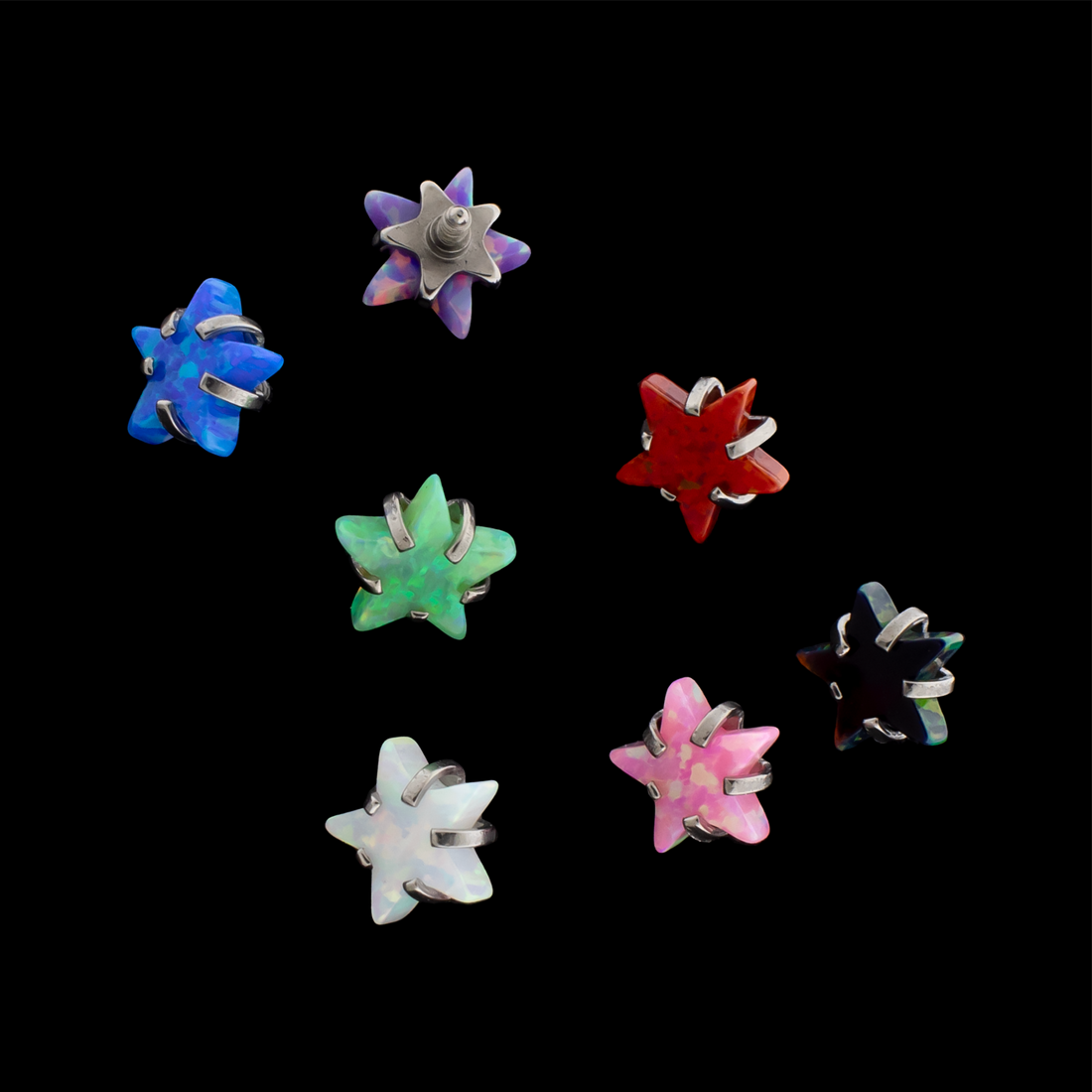When you're ready to change your piercing jewelry or upgrade to higher-quality pieces, understanding the different types of threading systems becomes crucial for your comfort and safety. Whether you're struggling to remove a stubborn piece, wondering why your piercer recommended a specific type of jewelry, or simply want to make informed decisions about your body jewelry, mastering the fundamentals of internally threaded jewelry will enhance your piercing experience.
The world of body jewelry offers various connection methods, but internally threaded jewelry stands out as the preferred choice among professional piercers and experienced piercing enthusiasts. This comprehensive guide will walk you through everything you need to know about internally threaded jewelry—from understanding its superior design to mastering removal and insertion techniques that protect both your jewelry investment and your piercing health.
What is Internally Threaded Jewelry?
Internally threaded jewelry represents a significant advancement in body piercing hardware design, offering superior comfort, safety, and functionality compared to traditional externally threaded alternatives. Understanding the mechanics and benefits of internally threaded jewelry is essential for anyone with piercings who wants to ensure proper care and optimal healing.
The fundamental difference between internally and externally threaded jewelry lies in where the threading mechanism is located. In internally threaded jewelry, the threads are carved inside the main piece of jewelry—typically the barbell post or the back of the jewelry. The removable end, such as a ball or decorative top, features a small threaded post that screws into these internal threads. This design creates a smooth exterior surface on the main jewelry piece that passes through your piercing.
Popular examples of internally threaded jewelry include pieces like the Hope 16g/18g internally threaded ends and Halo internally threaded jewelry, which showcase the elegant design possibilities when threading is hidden inside the jewelry.

This threading system contrasts sharply with externally threaded jewelry, where threads are cut into the outside of the barbell post or main jewelry piece. The removable end in externally threaded jewelry has internal threads that screw onto the external threads of the main piece. While this might seem like a minor distinction, it has profound implications for comfort, safety, and the overall piercing experience. It's worth noting that another modern alternative is threadless jewelry, which uses a different connection system entirely—you can learn more about this option in our threadless jewelry beginner's guide.
Why is Internally Threaded Jewelry Better?
The superiority of internally threaded jewelry becomes apparent when considering the piercing insertion and removal process. With externally threaded jewelry, the threaded portion must pass through the piercing channel during insertion or removal. These threads can catch on healing tissue, cause micro-tears, introduce bacteria, and create unnecessary trauma to the piercing site. The rough, threaded surface can feel like sandpaper against delicate healing tissue.
Internally threaded jewelry eliminates these problems entirely. The smooth exterior surface glides through the piercing channel without catching or causing trauma. This is particularly crucial during the initial healing period when tissue is most vulnerable to damage and infection. Even in well-healed piercings, the smooth surface reduces irritation and makes jewelry changes more comfortable.
Professional piercers and medical professionals consistently recommend internally threaded jewelry for these safety and comfort reasons. The investment in quality internally threaded pieces often pays dividends in faster healing times, reduced complications, and greater long-term comfort. For those exploring their options, browsing internally threaded ends and internally threaded barbells can provide insight into the variety of styles available.
How to Remove Internally Threaded Jewelry
Removing internally threaded jewelry requires understanding the specific mechanics of your particular piece. Most internally threaded jewelry follows standard threading conventions, but it's important to approach removal methodically and gently.
Step-by-Step Removal Process:
Begin by thoroughly washing your hands with antibacterial soap and drying them completely. Clean hands prevent introducing bacteria to your piercing during the jewelry change process. Consider wearing clean disposable gloves if you have difficulty gripping small jewelry pieces.
Identify which end of your jewelry is removable. In most internally threaded barbells, one end is fixed while the other unscrews. Typically, the decorative end or the end that appears to be a separate piece is the removable portion. Some jewelry pieces may have removable ends on both sides.

Grasp the main body of the jewelry firmly with one hand, usually the longest portion that passes through your piercing. With your other hand, grip the removable end. The key is maintaining control of both pieces to prevent dropping or losing components.
Rotate the removable end counterclockwise (left) while holding the main body steady. Remember the phrase "lefty loosey, righty tighty." Most threading follows this standard convention, though some specialty pieces may differ. Apply gentle, consistent pressure rather than forcing the connection.
If the jewelry feels stuck, avoid using excessive force, which can damage both the jewelry and your piercing. Instead, try gently wiggling the removable end while maintaining counterclockwise pressure. Sometimes a slight back-and-forth motion helps break the connection free.
How to Insert and Secure Internally Threaded Jewelry
Installing internally threaded jewelry requires the reverse process, but with additional considerations for thread alignment and proper seating.
Step-by-Step Insertion Process:
Start with the same hygiene preparations—clean hands and sterile technique. Ensure your new jewelry is clean and, if it's a fresh piercing, properly sterilized according to your piercer's instructions. For fresh piercings, consider starting with high-quality pieces like titanium threadless labret posts or premium options such as Lux Premium Zirconia threaded jewelry.
Insert the smooth main body through your piercing channel. The threaded end should enter first, passing completely through the piercing. Take your time and avoid forcing the jewelry, especially in newer piercings where tissue may still be tender.
Once the main body is positioned correctly, align the removable end with the internal threads. This alignment is crucial—cross-threading can damage both the jewelry and make future removal difficult. Start by placing the threaded post of the removable end into the internal threading and turning it counterclockwise slightly until you feel it drop into the thread groove.
Now rotate the removable end clockwise (right) while holding the main body steady. The connection should turn smoothly without resistance. If you encounter significant resistance, stop and realign the threads. Properly threaded connections should turn easily.
Tighten the connection until it feels secure, but avoid over-tightening. The goal is to prevent the end from coming loose during normal activity, but excessive tightening can make future removal difficult and may stress the threading.
Troubleshooting Common Issues
Sometimes internally threaded jewelry can become challenging to remove due to natural body processes or environmental factors. Body fluids, dead skin cells, and everyday debris can accumulate in the threading, creating a tight seal that makes removal difficult.
If jewelry appears stuck, try these gentle techniques before resorting to more aggressive methods. Warm compresses can help soften any accumulated material and may make removal easier. Soak a clean cloth in warm water and apply it to the jewelry for several minutes.
Commercial jewelry lubricants designed for body piercing applications can also help. These products are specifically formulated to be safe for use near piercing sites and can help ease stubborn connections. Never use household oils or lubricants, which may contain ingredients that could irritate your piercing.
Maintenance and Care Tips
Proper maintenance of internally threaded jewelry extends its lifespan and ensures continued comfort and safety. Regular cleaning prevents the accumulation of debris that can make removal difficult. Clean jewelry with appropriate piercing aftercare solutions or mild saline solutions. For comprehensive guidance on maintaining healthy piercings, refer to our detailed piercing aftercare guide.
Periodically check that threaded connections remain secure, especially in frequently moved areas like ear cartilage or lip piercings. Loose connections can lead to lost jewelry pieces, but remember that over-tightening can create removal difficulties.
When storing internally threaded jewelry, keep threaded components together to prevent loss. Consider using small containers with compartments to organize different pieces and prevent damage from contact with other jewelry.
Conclusion
Internally threaded jewelry represents the gold standard in body piercing hardware, offering superior comfort, safety, and functionality. Understanding proper removal and insertion techniques ensures you can maintain your piercings safely while enjoying the benefits of high-quality jewelry. Whether you're new to body piercings or experienced with jewelry changes, mastering these techniques will serve you well throughout your piercing journey.
Remember that when in doubt, professional piercers are always available to assist with jewelry changes and can provide personalized guidance for your specific piercing and jewelry combination. Investing in quality internally threaded jewelry and proper technique pays dividends in comfort, safety, and long-term piercing health.

